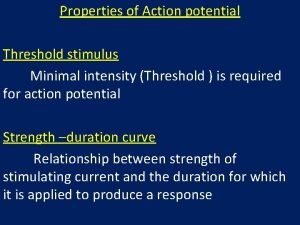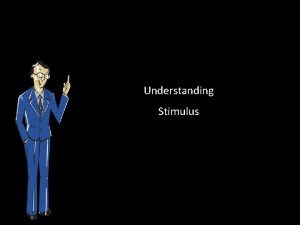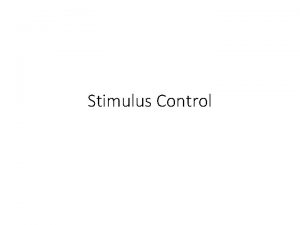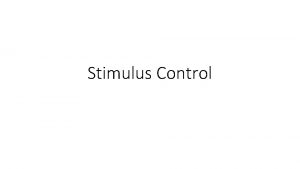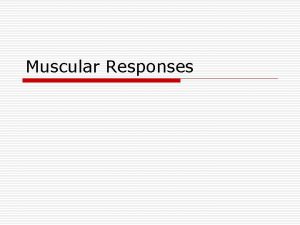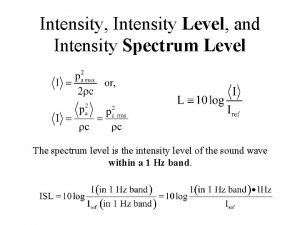Properties of Action potential Threshold stimulus Minimal intensity












- Slides: 12

Properties of Action potential Threshold stimulus Minimal intensity (Threshold ) is required for action potential Strength –duration curve Relationship between strength of stimulating current and the duration for which it is applied to produce a response

• Rheobase Weakest current strength to excite a tissue when it is allowed to flow for adequate time. Utilization time Time for which the Rheobase current strength is applied.

• Chronaxie Length of time for which a current twice ‘Rheobase’ intensity is applied. • Chronaxie unit of excitability and is inversely related to it. • Order of excitability Nerve >skeletal muscle>cardiac > smooth muscle

R 2 R Utilization time

• Refractory period Two successive stimulus is applied to an excitable cell, the cell become refractory to second stimulus. Absolute refractory period(ARP) Firing level to 1/3 rd of Repolarization. Relative refractory period(RRP) At the end of ARP to start of after depolarization.


• All or none law • Action potentials occur maximally or not at all. • Either the threshold potential is reached an action potential occurs, or it isn't reached and no action potential occurs.

• Conduction of action potential • AP generated at one location act as stimulus for production of AP in adjacent membrane. • Excitation is conducted as wave of depolarization. • Due to circular current flow and successive depolarization to firing level of membrane ahead of AP


• Local response • Sub minimal stimulus is applied. • Axon is stimulated with slowly increasing strength of stimuli. MP is decreased by 7 mv. • Cathelectrotonic potential developed at the cathode. • Anelectrotonic potential is developed at the anode.


Graded potential Action potential Sub minimal stimulus Threshold stimulus Does not obey all or none law Obey all or none law Can be summated Cannot be propagated Can be propagated
 Threshold membrane potential
Threshold membrane potential Threshold potential
Threshold potential Associative learning
Associative learning Order of classical conditioning
Order of classical conditioning Learning is defined as relatively ___ in behaviour.
Learning is defined as relatively ___ in behaviour. Graded potential vs action potential
Graded potential vs action potential Nerve action potential
Nerve action potential Graded vs action potential
Graded vs action potential Graded vs action potential
Graded vs action potential Difference between action and graded potential
Difference between action and graded potential Source of bioelectric potential is dash in nature
Source of bioelectric potential is dash in nature End-plate potential vs action potential
End-plate potential vs action potential Suggmadex
Suggmadex

